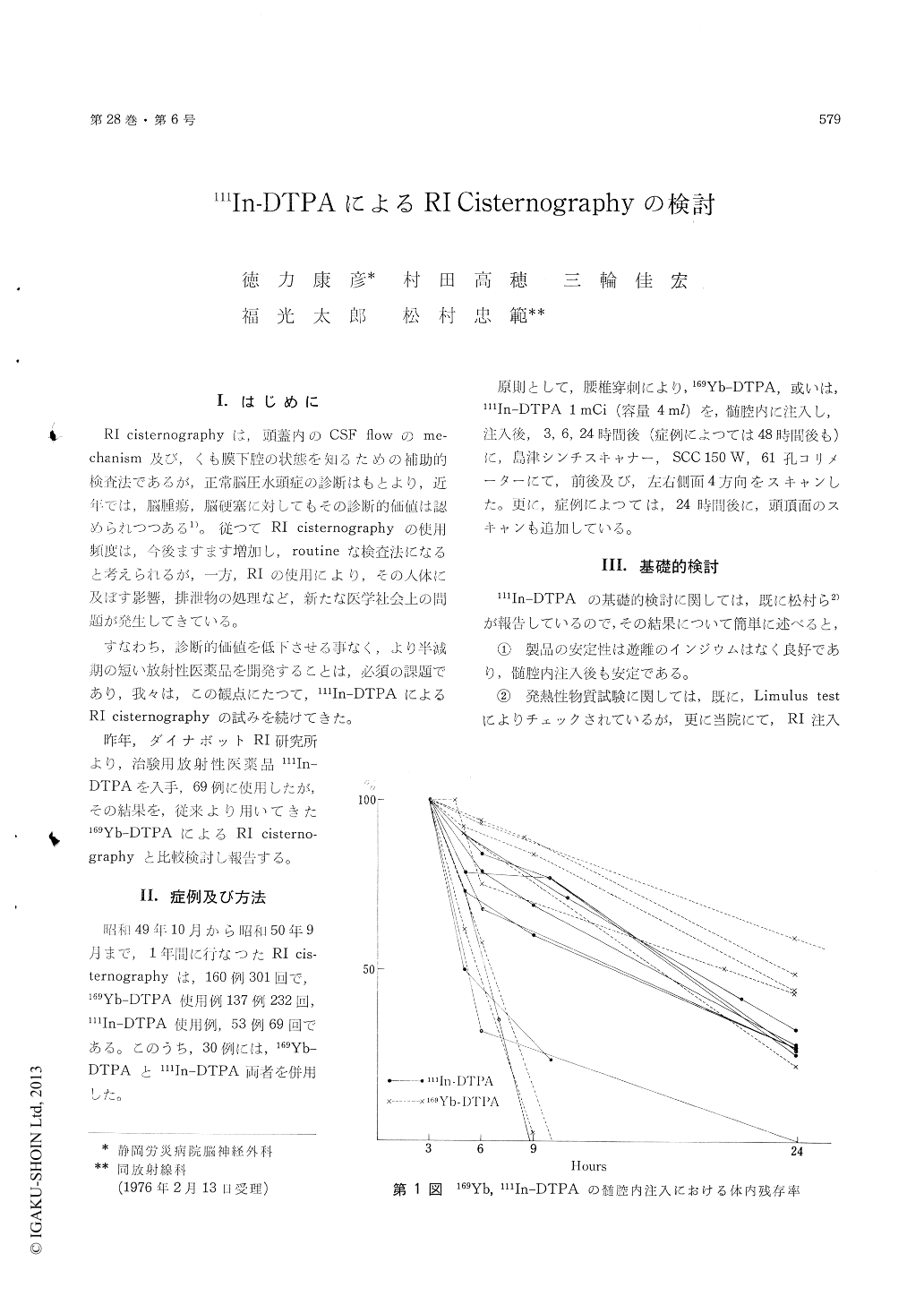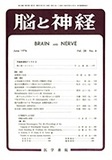Japanese
English
- 有料閲覧
- Abstract 文献概要
- 1ページ目 Look Inside
I.はじめに
RI cisternographyは,頭蓋内のCSF flowのme—chanism及び,くも膜下腔の状態を知るための補助的検査法であるが,正常脳圧水頭症の診断はもとより,近年では,脳腫瘍,脳硬塞に対してもその診断的価値は認められつつある1)。従つてRI cisternographyの使用頻度は,今後ますます増加し,routineな検査法になると考えられるが,一方,RIの使用により,その人体に及ばす影響,排泄物の処理など,新たな医学社会上の問題が発生してきている。
すなわち,診断的価値を低下させる事なく,より半減期の短い放射性医薬品を開発することは,必須の課題であり,我々は,この観点にたつて,111In-DTPAによるRI clsternographyの試みを続けてきた。
In contrast to 169Yb-DTPA the usage of 111InDTPA, a new radiopharmaceutical, is not as yetpopular for RI cisternography. This report dealswith a comparative study of these two radiophar-maceuticals for RI cisternography.
For the past one year 301 RI cisternographieswere performed in 160 cases at the NeurosurgicalSurvice of Shizuoka Rosai Hospital. Among those169Yb-DTPA was used in 137 occasions, 111In-DTPAin 53, and both 169Yb-DTPA and 111In-DTPA in30. The results of this study were as follow.
1. 111In-DTPA was chemically stable in intra-thecal administration.
2. A reactive fever was minimal with 111In-DTPA if any.
3. There was no adverse reaction, such as asepticmeningitis, following 111In-DTPA cisternographies.
4. The effective half-life of 111In-DTPA was 16hours, and that of 169Yb-DTPA 22 hours in thisseries. This means the men were exposed to radio-activity less with 111In_DTPA than with 169Yb-DTPA.
5. However, there was no difference in diagnosticvalue between these two radiopharmaceuticals, even48 hours after intrathecal administration. From this study 111In-DTPA appers to be moresuitable for RI cisternography than 169Yb-DTPA.

Copyright © 1976, Igaku-Shoin Ltd. All rights reserved.


